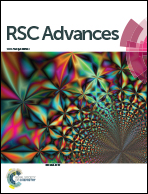Betel (Piper betle L.) leaf ethanolic extracts dechlorophyllized using different methods: antioxidant and antibacterial activities, and application for shelf-life extension of Nile tilapia (Oreochromis niloticus) fillets
Abstract
Different methods for chlorophyll removal were used for betel leaf ethanolic extracts (BLEE). Chlorophyll content, color, and antioxidant and antibacterial activities of the resulting extracts were examined. Sedimentation process remarkably reduced the chlorophyll content and color of BLEE (p < 0.05), while antioxidant and antibacterial activities were enhanced (p < 0.05). Polyphenol content and bioactivities of the extracts dechlorophyllized using organic solvents varied (p < 0.05). Antibacterial efficacy of BLEE dechlorophyllized by the sedimentation method (BLEE-SED) depended on concentrations. Lower minimum inhibitory concentration (MIC) and minimum bactericidal concentration (MBC) of BLEE-SED toward 4 bacteria were obtained, compared to other extracts. Lower microbiological and chemical changes were achieved when Nile tilapia fillets were treated with BLEE-SED at 400 and 600 ppm after 12 days of storage at 4 °C. Therefore, sedimentation as a green process could be adopted for preparing a safe BLEE with augmented bioactivities and pale color, which could extend shelf-life of refrigerated Nile tilapia fillets.



 Please wait while we load your content...
Please wait while we load your content...